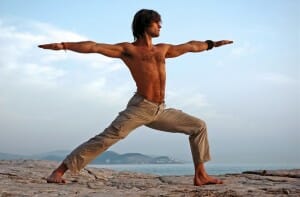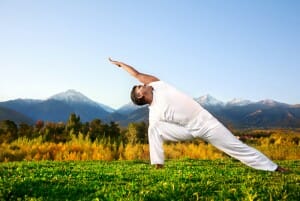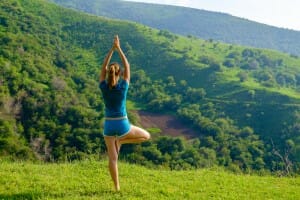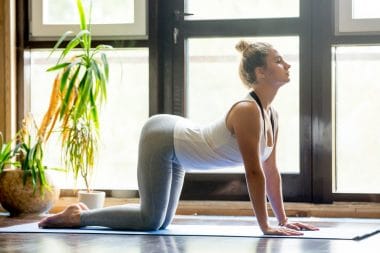Dating back thousands of years to a form of mediation first practiced in ancient India, yoga is a type of exercise often considered a therapeutic treatment in modern times. The goal of any form of yoga is to stretch and strengthen various muscle groups through controlled movements. Since September is National Yoga Month, it’s a good time to consider some basic yoga poses that could provide positive health benefits while also serving as a source of stress relief.
Mountain Pose
About as basic as yoga poses get, mountain pose can improve posture and boost mental clarity. It’s a simple series of movements that may also serve as a warm-up routine before getting into other yoga poses. Perform mountain pose by:
- Standing with your feet wide apart (while maintaining a comfortable balance)
- Keeping your arms at your sides
- Aligning your neck with your spine
Variation: Raise your arms into a prayer pose or reach upwards.
Warrior Pose
Another simple yoga position, warrior pose can serve as the basis for more complex moves once you’ve reached a solid level of comfort with beginner poses. It’s a movement that strengthens legs and ankles. Warrior pose is performed by:
- Standing with your legs comfortably apart (about 3-4 feet)
- Turning one foot 90 degrees towards the other foot
- Extending your arms to your sides (palms down) while keeping shoulders downward
- Lunging into the foot that’s turned 90 degrees
- Looking forward while keeping your knee over the foot that’s turned
- Holding the pose as long as you can before switching sides
Downward Facing Dog
This is another pose that tends to be especially beneficial for yoga newcomers. It’s a position that promotes full body circulation while stretching calves and heels. Perform downward facing dog by:
- Bending down so that you’re on all fours with your hands touching the ground
- Walking your hands forward as far as possible (while staying in a position where you can still maintain your balance) while spreading your legs shoulder-length apart
- Curling your toes and pressing your hips upwards (with your knees bent slightly)
Variation: Alternate between pressing your feet flat and curling your toes upwards for a more intense stretch.
Triangle Pose
This pose is especially beneficial for athletes looking to increase flexibility. It can also help with minor aches and pains in and around your lower back, knees, thighs and ankles. Perform triangle pose by:
- Standing on your legs (spread a few feet apart)
- Stretching to one side while touching your foot with the hand on that side (without bending your knees)
- Reaching upward with your other hand
- Repeating with the other side
Tree Pose
As the name implies, tree pose involves assuming a position very similar to a lone standing tree. Consequently, it’s also a pose that can improve balance while strengthening your calves, spine, ankles and thighs. Perform tree pose by:
- Assuming a basic mountain pose
- Shifting your weight to one leg
- Placing your opposite foot on the inner thigh of the leg that’s supporting your weight
- Assuming a prayer position while moving your hips slightly forward for support
Variation: Instead of assuming a prayer position, lift your arms up as with the variation on mountain pose while balancing on one leg with your other foot against your lower thigh.
Bridge Pose
Considered a simple back stretching move, bridge pose affects joints and muscles supporting the spine while also strengthening your neck and chest. Perform bridge pose by:
- Lying on the floor with your arms at your side
- Bending your knees while keeping your feet flat and lifting your hips up
- Clasping your hands under your lower back
- Bringing your chest to your chin
Variation: Add pillows under your head or hips for added support.
The health benefits often associated with yoga include increased muscle strength, increased range of motion, better balance and coordination, weight loss and improved athletic performance. However, before starting any yoga routine, check with your doctor to ensure that it’s a regimen that fits in with your capabilities and overall health goals.











Reply